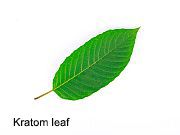More than half of first-ranked exposures result in serious medical outcome
MONDAY, Feb. 25, 2019 (HealthDay News) — Kratom, or Mitragyna speciosa, exposure is associated with serious medical outcomes, especially as part of multiple-substance exposure, according to a study published online Feb. 20 in Clinical Toxicology.
Noting that kratom, a plant indigenous to Southeast Asia, is increasingly being used in the self-management of opioid withdrawal, Sara Post, from the Research Institute at Nationwide Children’s Hospital in Columbus, Ohio, and colleagues examined exposures to kratom reported to poison control centers (PCCs) in the United States during 2011 to 2017.
A total of 1,807 kratom exposures were reported to U.S. PCCs from 2011 through 2017. The researchers found that 65.0 percent of these exposures occurred during 2016 to 2017. Most of the exposures occurred among males (70.8 percent), among adults aged ≥20 years (88.9 percent), and at a residence (86.1 percent). Most exposures were intentional (74.3 percent). Overall, 31.8 percent of first-ranked kratom exposures resulted in health care facility (HCF) admission; 51.9 percent resulted in a serious medical outcome. Compared with single-substance exposure, multiple-substance exposures correlated with increased odds of HCF admission and a serious medical outcome (odds ratios, 2.80 and 2.25, respectively). Eleven deaths were associated with kratom exposure; two occurred after exposure to kratom only. Agitation/irritability (22.9 percent) and tachycardia (21.4 percent) were the most common clinical effects.
“Despite the perception that kratom is safe because it is classified as an herbal supplement, a variety of serious medical outcomes following exposure to kratom have been documented,” the authors write.
Copyright © 2019 HealthDay. All rights reserved.








